Contents
Even the most experienced photographers will sometimes find themselves in a creative rut…
There is an infinite number of ways to capture the world with your camera, but sometimes you might just need a little inspiration.
From using your camera equipment in different ways to branching out to a different style of photography, there’s no shortage of quick and easy ways to add more creativity and originality to your photos.
Whether you’re shooting landscapes or food photography, if you find yourself needing a new idea, here are 48 ideas to add more creativity to your photos.
While the ideas are sorted by genre of photography, mix and match them with whatever type of images you like to shoot.
Or…take a creative challenge and branch out into something entirely new.
So here are 48 Great Ideas on How to Take Creative Photos by Category:
Creative Abstract Photography ideas
- If you haven’t already, branch out into shooting abstracts. Abstract photography makes the list here first since it’s one form of photography that many beginner photographers shy away from. Yet as a field of photography, it lends itself to creative and imaginative photos. Abstract photography allows you to experiment with the world around you, bending some of the standard photography rules to create out-of-the-box images. If you haven’t tried shooting abstracts, study some examples online and then challenge yourself to shoot in the genre.
- Use everyday objects. One thing that sets good abstract photographers apart is their ability to take photos of everyday objects in creative and compelling ways. Try using a household item like a wine glass or a toy car. Experiment with as many different ways you can photograph the object.
- Move your camera.
 One of the easiest ways to transform an image from traditional to abstract is through camera motion. Most times, photographers do everything they can to avoid camera blur. Yet for some creative shots, you might decide to experiment with moving your camera while you’re shooting. Try rotating, panning, or gently throwing your camera in the air at the same time the shutter fires.
One of the easiest ways to transform an image from traditional to abstract is through camera motion. Most times, photographers do everything they can to avoid camera blur. Yet for some creative shots, you might decide to experiment with moving your camera while you’re shooting. Try rotating, panning, or gently throwing your camera in the air at the same time the shutter fires. - Zoom while shooting. Another creative technique that’s popular among abstract photographers is called zoom blur. By manually zooming in or out while the shutter fires, the sensor captures a unique blur. It gives the viewer the sensation of movement, even in situations where the subject is not. If you typically find yourself gravitating towards tack-sharp focus, challenge yourself to try adding some intentional blur to your images.
- Shoot through other objects.
 Glass, liquids, gels, and filters can all be used in abstract photography to create interesting reflections and lighting. Try shooting your subject through another object like a windshield, a wine glass, or a bottle of liquid dish detergent.
Glass, liquids, gels, and filters can all be used in abstract photography to create interesting reflections and lighting. Try shooting your subject through another object like a windshield, a wine glass, or a bottle of liquid dish detergent.
Creative Architecture Photography Ideas
- Study an architecture photography book. This could really be said for all types of photography, not just architecture. One way to get some fresh, creative ideas for your photos is to study someone else’s. Go to a local library or bookstore, find an architecture photography book, and then look through the images. Decide on a few ideas that strike you as impressive, and then use it as inspiration to shoot buildings around you.
- Shoot in different weather conditions. We’ve seen thousands of city skyline and architecture photos with bright clouds and perfect golden hour lighting. So, why not try shooting in less-than-ideal weather conditions? If you’re willing to brave some inclement weather, the lightning, mist, or rainbow might be the best way to capture a particular building.
- Try refraction photography.
 One inspiring way to create new life and energy into your cityscapes and skylines is to try refraction photography. By shooting buildings through a crystal ball, a water droplet, or a lens filter, you can bend and shape the architecture in exciting ways. It can take some practice to get the hang of focus and lighting in refraction photos, so be patient with yourself as you learn a new technique.
One inspiring way to create new life and energy into your cityscapes and skylines is to try refraction photography. By shooting buildings through a crystal ball, a water droplet, or a lens filter, you can bend and shape the architecture in exciting ways. It can take some practice to get the hang of focus and lighting in refraction photos, so be patient with yourself as you learn a new technique. - Get up close. One common mistake that beginners make when shooting architecture is to assume that buildings are only shot from afar. Instead, one way to add some creative life to your architecture photography is to get up close to a building. Shoot the details of the roof, of decorative finishes, or part of a wallpaper pattern. By getting up close, you can challenge yourself to look at the same subject differently.
Food Photography Creative Ideas
- Try different backgrounds. This may be an obvious way to introduce more creativity into your photos, but when it comes to food photography mixing up backdrops and props is the best place to start. There are thousands of food photos available online right now, spend some time looking at the same dish—let’s say, a slice of apple pie—and how by changing the background and a few of the props, the story about that slice of pie changes. Experiment with different lighting, different backgrounds, and different staging ideas should be your first place to start for more creative food photos.
- Shoot the setting, not just the food.
 Another way to add creativity to your food photography is to shoot some of the background setting, not just the food. If you’re subject is an ice cream sundae, consider shooting the inside of the ice cream shop, the different ice cream flavors, or the empty sundae dishes. If it’s a recipe with fruit or vegetables, go out to the garden, shoot at an orchard, or take photos of buying the ingredients at the farmer’s market.
Another way to add creativity to your food photography is to shoot some of the background setting, not just the food. If you’re subject is an ice cream sundae, consider shooting the inside of the ice cream shop, the different ice cream flavors, or the empty sundae dishes. If it’s a recipe with fruit or vegetables, go out to the garden, shoot at an orchard, or take photos of buying the ingredients at the farmer’s market. - Shoot the characters. At the same time you shoot the setting of your food, creative food photographers often find themselves shooting the characters that are involved in a meal or recipe as well. If it’s a favorite family dish, shoot the family meal where your loved ones sit down to eat it together. Sneak in some images of the chef or bartender. Capture your kids or a self-portrait of setting the table before you sit down to eat. Paired together with the food photos you already planned to take it can tell a more creative story.
Creative Ideas for Landscape Photography
- Shoot from above. For whatever reason, we get hung up on the idea that landscape photos have to be shot in one way, directly across from the focal point of the scene with as much in the frame as possible. One way to see landscapes differently is to shoot them from above, using a photography kite, drone, or monopod. Shooting landscapes from above changes the perspective, allowing you to achieve a creative bird’s eye view.
- Shoot the same place for several hours. Another way to add creativity to your landscape photos is to set up a tripod and stay for a while. By shooting the same exact scene in the same way over several hours (especially early in the morning or late the day when the light changes quickly), you might be surprised how the images change over time. Spending some extended time looking at the same scene might also give you some creative ideas about other angles and creative ways it could be photographed.
- Shoot in macro to create a different world.
 Despite what you may have practiced in the past, not all landscapes need to be shot with a portrait-style focal length. Sometimes, the best creative shots are taken by first shooting a scene with a standard length lens, and then pulling out a dedicated macro lens to go back and shoot textures, patterns, and the small details that can create a different world from the landscape you just shot.
Despite what you may have practiced in the past, not all landscapes need to be shot with a portrait-style focal length. Sometimes, the best creative shots are taken by first shooting a scene with a standard length lens, and then pulling out a dedicated macro lens to go back and shoot textures, patterns, and the small details that can create a different world from the landscape you just shot. - Experiment with infrared settings and filters. As camera technology has improved over time, many photographers now have the option to take infrared photos. Infrared images can be particularly effective with landscape photography. Try shooting popular landscapes like mountains, beaches, and trees. The infrared spectrum gives the viewer a chance to see a ‘hidden’ image from what they might be familiar with.
Get Creative with Night Photography
- Master the ‘Bulb’ setting. If you feel like your night photography images all look the same or you’re struggling to take compelling night photos, you may be missing out on bulb mode. “B,” or the longest end of the shutter speed on your camera, bulb mode allows the photographer to take a picture for as long as the shutter is depressed. When used with a remote or cable release, it can help to capture stunning light trails. Try incorporating it with photos of traffic, fireworks, or stars.
- Try light painting.
 Another way to elevate your night photography is to use the night sky as a canvas. Light painting involves using a hand-held light and long exposure to paint or draw in an image. Photos utilizing this technique can be as simple as adding a sparkler or cell phone flashlight streak to an image. Other photographers use multiple colors, gel lights, or fireworks to create intricate patterns and designs.
Another way to elevate your night photography is to use the night sky as a canvas. Light painting involves using a hand-held light and long exposure to paint or draw in an image. Photos utilizing this technique can be as simple as adding a sparkler or cell phone flashlight streak to an image. Other photographers use multiple colors, gel lights, or fireworks to create intricate patterns and designs. - Shoot at different times of the night to find the best darkness for the location. One of the reasons you may feel like your night images lack the spark you’re looking for is related to the time of night you’re shooting in. Not all times of night create the same darkness in a particular scene. The darkest lighting in a specific location might come hours later than you planned. It might also be different depending on the weather, clouds, and moon phases can dramatically change the available darkness in a location.
- Try star effect filters.
 Star effect filters are special night photography filters that—when added to your lens—flare out any available light in the scene. Star effect filters come in a cross, 6 pointed stars, or 8 pointed stars, depending on how many rays of light coming from the light source.
Star effect filters are special night photography filters that—when added to your lens—flare out any available light in the scene. Star effect filters come in a cross, 6 pointed stars, or 8 pointed stars, depending on how many rays of light coming from the light source. - Change up your subject. Many people think that city lights and traffic are the only options for night photography subjects. Spending some time searching for new subjects might just be the inspiration you need to change up your images. Try some of these ideas for new things to shoot at night:
- Holiday lights
- Fireworks
- Mirrors and reflections
- Monuments, statues, and fountains
- Bridges
- Stars, planets, and other astrophotography events
- Hot air balloon or lantern festivals
- Theme parks and amusement park rides
Getting Creative in Portrait Photography
- Shoot your subjects in motion. Portrait photography is one of the areas where many photographers find it difficult to keep producing unique and creative images. Highly-posed photos where the subject is looking straight forward into the camera can feel canned and lack creative inspiration over time. One quick way to life to your portraits is to shoot your subjects in motion. It can take a bit more practice and technique to get tack-sharp pictures if your subject is moving, but it can be a simple way to mix up a stale portrait session.
- Shoot with a wide-angle lens.
 Wide-angle lenses are not the most popular options for portrait photography because, without the proper technique, they can result in a less-than-flattering portrait. Learning how wide-angle lenses can provide the right amount of background context and distortion—without stretching the subject’s eyes and facial features—is worth it to create some unique looks to your portraits.
Wide-angle lenses are not the most popular options for portrait photography because, without the proper technique, they can result in a less-than-flattering portrait. Learning how wide-angle lenses can provide the right amount of background context and distortion—without stretching the subject’s eyes and facial features—is worth it to create some unique looks to your portraits. - Add a convex lens or prism to bend light around a subject.
 Shooting portraits through other materials like lenses, prisms, and glass is not a new technique, but it can boost the interest and engagement in the subject of a portrait. Try highlighting the subject with bent light from a prism or shooting their reflection in a mirror or lens for a subtle change in perspective.
Shooting portraits through other materials like lenses, prisms, and glass is not a new technique, but it can boost the interest and engagement in the subject of a portrait. Try highlighting the subject with bent light from a prism or shooting their reflection in a mirror or lens for a subtle change in perspective. - Re-create a scene. Have a cherished family photo from a different era? Shooting a portrait session in a place where another famous photo was taken? Why not re-create a scene from a different picture for a clever add-on to portrait session? Try shooting the same photo of a subject at different points in their life or re-creating a family portrait with a different generation. Find inspiration from other famous images to capture your subject with some humor or creativity.
- Change up eye contact.
 There’s nothing to say that a good portrait must be taken with the subject making direct eye contact with the camera. Having your subject make eye contact with something in the scene or in the distance can quickly change the storytelling of the image. If you’re taking a family or group portrait, have the subjects look at each other or focus on a central person for some of the shots to create a candid or more relaxed mood.
There’s nothing to say that a good portrait must be taken with the subject making direct eye contact with the camera. Having your subject make eye contact with something in the scene or in the distance can quickly change the storytelling of the image. If you’re taking a family or group portrait, have the subjects look at each other or focus on a central person for some of the shots to create a candid or more relaxed mood. - Ask a subject to pose themselves. Many photographers think it’s up to them to decide the best way to photograph a particular subject. Sometimes the most creative portraits come when you ask a subject to pose themselves. You may end up with a candid look into a subject’s personality or a subject’s most natural smile.
Creative Street Photography
- Shoot crowds. Many beginners start taking street photos by isolating a single subject or two in their images. Another creative option is to shoot in a crowd of people. Try to capture the movement of the group or the day-to-day ways we all interact together. You might also decide to highlight a specific subject’s movement within a crowd. Using depth of field and good focus, you can isolate one person’s story among a larger group.
- Experiment with bokeh. Creating bokeh (pronounced BOH-Kay), or unfocused blurs of light in images is a creative photography technique that’s especially useful in street and portrait photography. The term comes from the Japanese word for “blur” or “haze” and is characteristic of the soft, out-of-focused light flares in the background of a subject. While bokeh can be developed in an image in different ways, it’s commonly created by using a fast lens and a shallow depth-of-field to blur the background behind the subject. In street photography, consider using bokeh by blurring the city lights behind a subject shot at night or when shooting through reflective surfaces like water or glass.
- Change angles. Shoot from above, below, or from the hip.
 Good street photography involves being skilled with a camera’s settings and quick to capture images as they develop. It also involves creatively selecting angles to shoot buildings and people from. Consider these different angles to work a street photography scene:
Good street photography involves being skilled with a camera’s settings and quick to capture images as they develop. It also involves creatively selecting angles to shoot buildings and people from. Consider these different angles to work a street photography scene:
- Eye-level is the most common angle for street photography. It’s easy and effortless but may not always be the best option. But remember that eye level is different when shooting children, seniors, pets, or subjects sitting on a curb or street.
- Get up high and shooting a street scene from above the subjects.
- Shoot from the ground and capture “a bug’s view” of the world above.
- Shoot from the hip, with or without alerting your subject.
- Shoot in burst mode to take lots of shots. Setting your camera to shoot in burst mode is a useful technique for all photos with movement, not just street photography. You may find that shooting 5-10 images at a time gives you the best chance at capturing the action of a scene at precisely the right time. You might also be able to capture a subject in a slightly different smile or facial expression that tells a more compelling story.
- Experiment with exposure. Avoiding overexposure and underexposure is one of the first skills a beginner photographer learns. However, all good rules are meant to be broken, especially in street photography. Learning how to creatively underexpose or overexpose images to tell the story of a scene is another creative way to push your photos to the next level.
Travel Photography Ideas
- Take a photo vacation. Feeling like you could use some more formal photography training? Now more than ever, there are options to book a trip that’s specifically dedicated to photography. Day-long and week-long excursions are a great way to spend time working on your composition and technical skills with a guide or expert to give you in-the-moment feedback.
- Look at how others shoot the same location before you go. If you know you’re heading to a popular travel destination, do some online research before you go about ways that other people have captured the same scene. While no one wants to copy another photographer’s work directly, you may find that some pre-travel research can give you ideas about when, where, and how to shoot a particular location. Maybe the best way to shoot the space is from above, or at night, or when the crowds are at a minimum. By establishing a plan before you go, there’s a higher chance you’ll get the shots you came for.
- Shoot the locals.
 Good travel photography doesn’t just involve shooting landscape or architecture photos. Take a break from these standards and step into some street photography. Shoot images that include local residents; capture the day-to-day movements of a location to help establish the setting and tell the story of what it’s like to visit.
Good travel photography doesn’t just involve shooting landscape or architecture photos. Take a break from these standards and step into some street photography. Shoot images that include local residents; capture the day-to-day movements of a location to help establish the setting and tell the story of what it’s like to visit. - Revisit places you’ve already photographed. Don’t just assume that travel photography is always a one-and-done experience. Sometimes to capture the most creative images of a particular place, you may need to visit two or three times. Visit a location in the day and then go back at night. Visit during a workday and then visit on the weekend when the sights and sounds may be different. Try different times of the day and see how the light changes. Revisit places that you visited many years ago and take ‘before and after’ style images.
Wildlife/Animal Photography
- Shoot from eye level or below the animal if possible. With so many pet owners and travelers looking for wildlife encounters, the popularity of animal photography continues to grow. Working to capture unique and compelling wildlife photos starts with the right angle. The most natural and commanding way to shoot animals is either at their eye level or from below. It also requires the most work from the photographer. To take more creative photos of animals, try to change up the angle from your perspective to the animal.
- Aim to capture the eyes. Humans identify with animals the most through eye contact. Try to make direct eye contact with the animal and have the eyes in tack-sharp focus. It requires ultra-fast lens speeds and often requires shooting from a distance. It’s one of the many reasons wildlife lenses can be an expensive investment.
- Get up close or stand way back to change the perspective.
 Not all animal photos need to be taken at a comfortable 8-10 feet away from the subject. Some of the most creative images of pets are taken up close, with wide-angle lenses. Wildlife photography that captures animals at a distance—and in their natural habitat—is also an exciting addition to zoomed-in, full-frame images.
Not all animal photos need to be taken at a comfortable 8-10 feet away from the subject. Some of the most creative images of pets are taken up close, with wide-angle lenses. Wildlife photography that captures animals at a distance—and in their natural habitat—is also an exciting addition to zoomed-in, full-frame images. - Try panning. Just like humans, pets and wildlife are always in motion. We look for fast lenses in wildlife photography to capture an animal on the move. But blur is not always a bad thing, especially when added creatively to an image. Why not consider introducing camera panning to photos of pets and wild animals? It’s a popular technique for birds in flight, but can also be used for any animal on the move.
- Use rim lighting. Rim lighting is a technique in photography that involves positioning the subject and lighting source so that the light at the edge or ‘rim’ is brighter than elsewhere on the subject. It’s popular in wildlife photography, especially because many animals are most active early in the morning or late in the day when the sun is low enough to create rim lighting effects.Rim lighting requires you to make sure that the subject is directly between your camera and the sun. It also requires some careful tweaking of your camera’s exposure settings. However, anytime you can see a subject lit with rim lighting with the naked eye, then it should be possible to achieve it with your camera.
Other Tips for Creative Photography
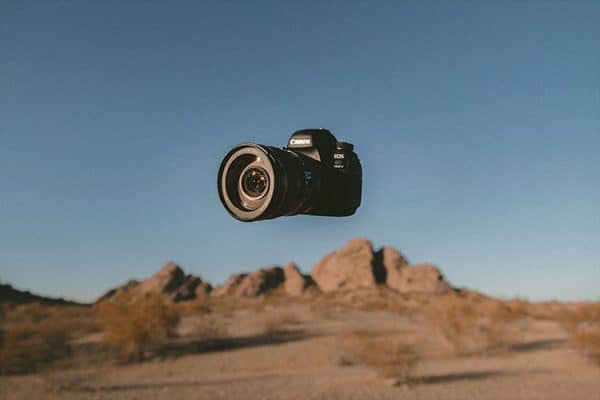
If you’re not shooting in a specific type of photography but just looking for ways to branch out and expand your creative skills with a camera, here are a few more tips to try:
- Mix and match techniques from different genres. As mentioned earlier, the methods listed above are sorted by genre just as a suggestion. However, the creative techniques used in one style of photography can almost always be incorporated into whatever type of images you prefer to take. Creative techniques like refraction photography, changing angles, or studying a photography book, can be a valuable addition to your toolbox no matter what type of photos you take. The key to taking creative images is to identify a new technique or idea and then test out ways you can make it work for your own style.
- Try a 365 challenge. Made famous as photography accounts grew on social media, 365 photo challenges encourage photographers to take one photo per day on either an assigned topic or at your own inspiration. As mentioned above, creativity is a skill that can be practiced. After 365 days of exercising your creative inspiration, you’ll be better at it. And you’ll have a year of gorgeous photos to show for it!
- Start an ‘inspiration book.’
 Once you start searching for creative ways to inspire your photography, you’ll be surprised how often you’ll find a new idea to try. Many experienced artists and photographers keep a small journal or inspiration book to jot down notes whenever you find inspiration. There are also smartphone apps that allow you to take photos of things that inspire you and save them for later.
Once you start searching for creative ways to inspire your photography, you’ll be surprised how often you’ll find a new idea to try. Many experienced artists and photographers keep a small journal or inspiration book to jot down notes whenever you find inspiration. There are also smartphone apps that allow you to take photos of things that inspire you and save them for later. - Shoot new subjects. Sometimes it’s not necessarily that you need to change “how” you take photos to be more creative, it’s that you need to change up the “what” of your photography. To mix it up, try one of these ideas for new subjects:
- Fairs or carnivals
- Fantasy scenes
- Fountains and water
- Graffiti
- Silhouettes or shadows
- Still life objects
- Self-portraits
- Sunrises and sunsets
- Traffic
- Underwater photography
<ol start=”46″>
- Be open to critique on your photos. While it takes some courage to ask and accept a review of your photos, sometimes it can be helpful to recruit feedback from another photographer. By showing another photographer a portfolio of your work, you’re likely to receive some fresh ideas and inspiration to push your work forward.
- Take a mixed media approach.
 Some of the world’s most successful photographers don’t just stop at taking photos. The creativity in their work comes from what they do with the images they take. Try a mixed media approach to your pictures and do something with your photos afterward. Techniques like sewing, burning, painting, and digital editing can all add dimension and more storytelling to your images.
Some of the world’s most successful photographers don’t just stop at taking photos. The creativity in their work comes from what they do with the images they take. Try a mixed media approach to your pictures and do something with your photos afterward. Techniques like sewing, burning, painting, and digital editing can all add dimension and more storytelling to your images. - Practice. Practice. The best photographers take thousands of images. They carry a camera with them at all times and spend time shooting images every day. Believe it or not, to be a more creative photographer, you should actually take photos! Shoot a set of images, spend time carefully looking at them to decide what worked well and what did not. Then go shoot some more!
Related Questions

How do you take creative pictures of yourself?
Self-portrait photography is one of the least explored genres of photography. Many photographers prefer to be behind the camera, rather than the subject of photos. However, if you’re interested in some proper techniques to take better pictures of yourself, try these ideas for the most flattering images:
- Use a stand-in item to compose the photo and use auto-focus settings on your camera to get tack-sharp pictures.
- Use a tripod to allow you to get the set up exactly right before you shoot.
- Look for soft, natural lighting.
- Use burst mode to take multiple photos in succession.
- Fill yourself in the frame.
- Don’t take just posed self-portraits. Try to capture yourself in the middle of movement to take more natural images.


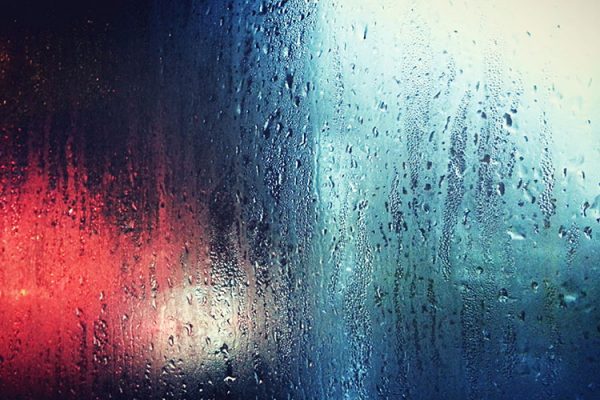 One of the easiest ways to transform an image from traditional to abstract is through camera motion. Most times, photographers do everything they can to avoid camera blur. Yet for some creative shots, you might decide to experiment with moving your camera while you’re shooting. Try rotating, panning, or gently throwing your camera in the air at the same time the shutter fires.
One of the easiest ways to transform an image from traditional to abstract is through camera motion. Most times, photographers do everything they can to avoid camera blur. Yet for some creative shots, you might decide to experiment with moving your camera while you’re shooting. Try rotating, panning, or gently throwing your camera in the air at the same time the shutter fires. Glass, liquids, gels, and filters can all be used in abstract photography to create interesting reflections and lighting. Try shooting your subject through another object like a windshield, a wine glass, or a bottle of liquid dish detergent.
Glass, liquids, gels, and filters can all be used in abstract photography to create interesting reflections and lighting. Try shooting your subject through another object like a windshield, a wine glass, or a bottle of liquid dish detergent.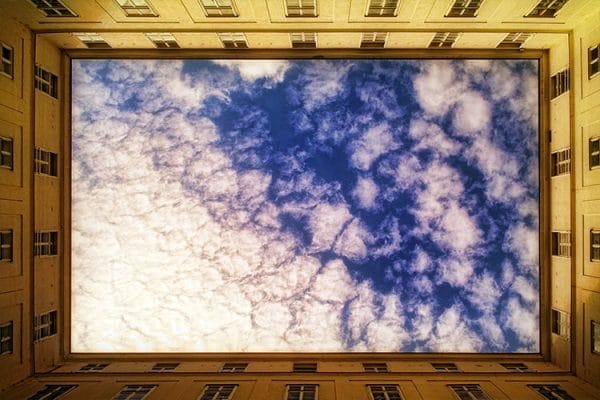
 One inspiring way to create new life and energy into your cityscapes and skylines is to try refraction photography. By shooting buildings through a crystal ball, a water droplet, or a lens filter, you can bend and shape the architecture in exciting ways. It can take some practice to get the hang of focus and lighting in refraction photos, so be patient with yourself as you learn a new technique.
One inspiring way to create new life and energy into your cityscapes and skylines is to try refraction photography. By shooting buildings through a crystal ball, a water droplet, or a lens filter, you can bend and shape the architecture in exciting ways. It can take some practice to get the hang of focus and lighting in refraction photos, so be patient with yourself as you learn a new technique.
 Another way to add creativity to your food photography is to shoot some of the background setting, not just the food. If you’re subject is an ice cream sundae, consider shooting the inside of the ice cream shop, the different ice cream flavors, or the empty sundae dishes. If it’s a recipe with fruit or vegetables, go out to the garden, shoot at an orchard, or take photos of buying the ingredients at the farmer’s market.
Another way to add creativity to your food photography is to shoot some of the background setting, not just the food. If you’re subject is an ice cream sundae, consider shooting the inside of the ice cream shop, the different ice cream flavors, or the empty sundae dishes. If it’s a recipe with fruit or vegetables, go out to the garden, shoot at an orchard, or take photos of buying the ingredients at the farmer’s market.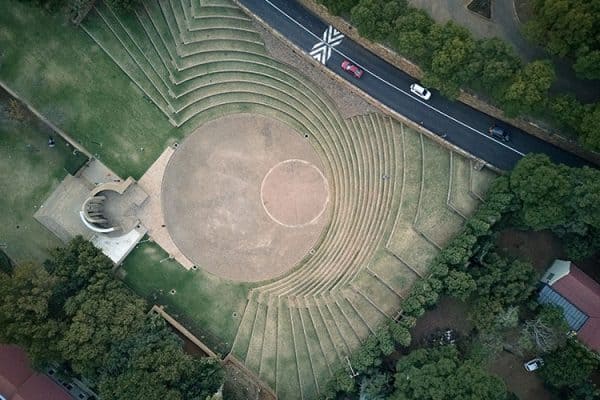
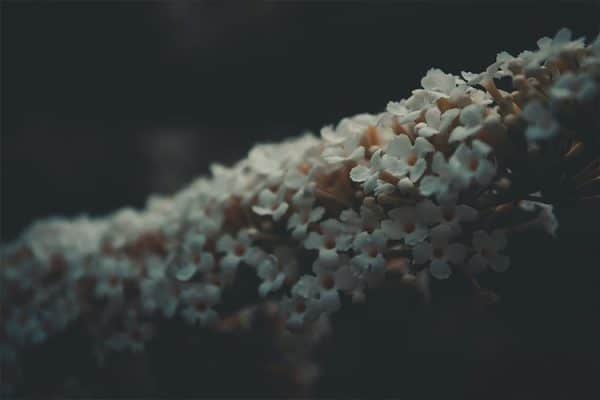 Despite what you may have practiced in the past, not all landscapes need to be shot with a portrait-style focal length. Sometimes, the best creative shots are taken by first shooting a scene with a standard length lens, and then pulling out a dedicated macro lens to go back and shoot textures, patterns, and the small details that can create a different world from the landscape you just shot.
Despite what you may have practiced in the past, not all landscapes need to be shot with a portrait-style focal length. Sometimes, the best creative shots are taken by first shooting a scene with a standard length lens, and then pulling out a dedicated macro lens to go back and shoot textures, patterns, and the small details that can create a different world from the landscape you just shot.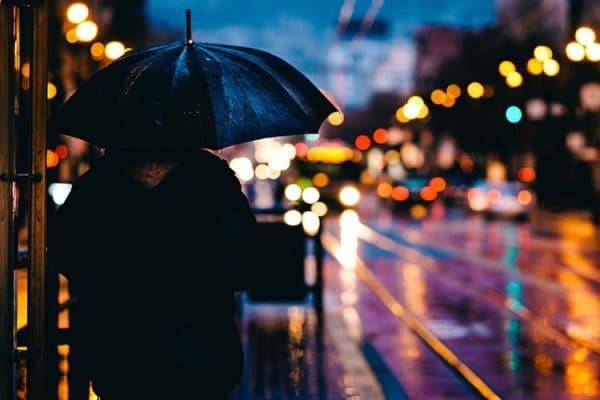
 Another way to elevate your night photography is to use the night sky as a canvas. Light painting involves using a hand-held light and long exposure to paint or draw in an image. Photos utilizing this technique can be as simple as adding a sparkler or cell phone flashlight streak to an image. Other photographers use multiple colors, gel lights, or fireworks to create intricate patterns and designs.
Another way to elevate your night photography is to use the night sky as a canvas. Light painting involves using a hand-held light and long exposure to paint or draw in an image. Photos utilizing this technique can be as simple as adding a sparkler or cell phone flashlight streak to an image. Other photographers use multiple colors, gel lights, or fireworks to create intricate patterns and designs.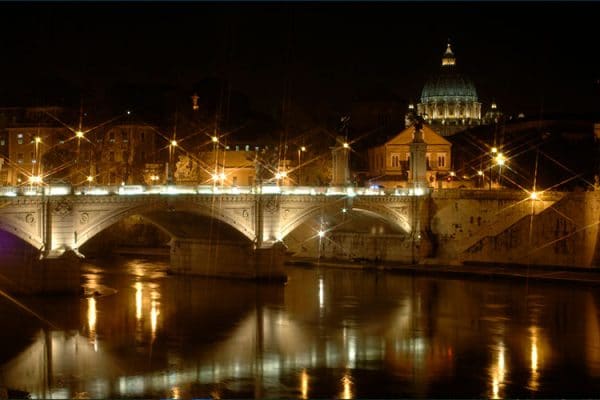 Star effect filters are special night photography filters that—when added to your lens—flare out any available light in the scene. Star effect filters come in a cross, 6 pointed stars, or 8 pointed stars, depending on how many rays of light coming from the light source.
Star effect filters are special night photography filters that—when added to your lens—flare out any available light in the scene. Star effect filters come in a cross, 6 pointed stars, or 8 pointed stars, depending on how many rays of light coming from the light source.
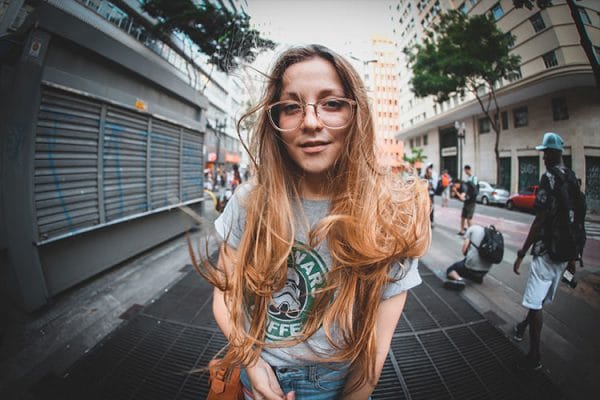 Wide-angle lenses are not the most popular options for
Wide-angle lenses are not the most popular options for 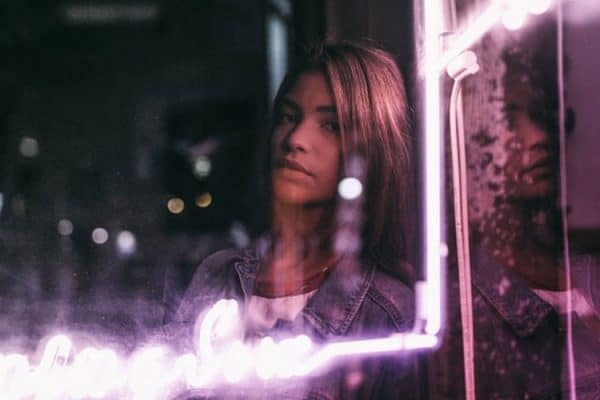 Shooting portraits through other materials like lenses, prisms, and glass is not a new technique, but it can boost the interest and engagement in the subject of a portrait. Try highlighting the subject with bent light from a prism or shooting their reflection in a mirror or lens for a subtle change in perspective.
Shooting portraits through other materials like lenses, prisms, and glass is not a new technique, but it can boost the interest and engagement in the subject of a portrait. Try highlighting the subject with bent light from a prism or shooting their reflection in a mirror or lens for a subtle change in perspective. There’s nothing to say that a good portrait must be taken with the subject making direct eye contact with the camera. Having your subject make eye contact with something in the scene or in the distance can quickly change the storytelling of the image. If you’re taking a family or group portrait, have the subjects look at each other or focus on a central person for some of the shots to create a candid or more relaxed mood.
There’s nothing to say that a good portrait must be taken with the subject making direct eye contact with the camera. Having your subject make eye contact with something in the scene or in the distance can quickly change the storytelling of the image. If you’re taking a family or group portrait, have the subjects look at each other or focus on a central person for some of the shots to create a candid or more relaxed mood.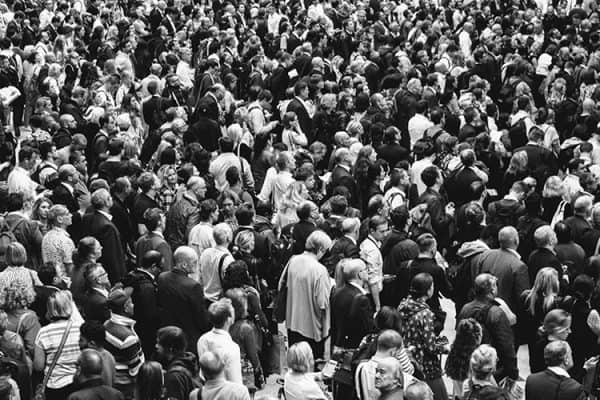
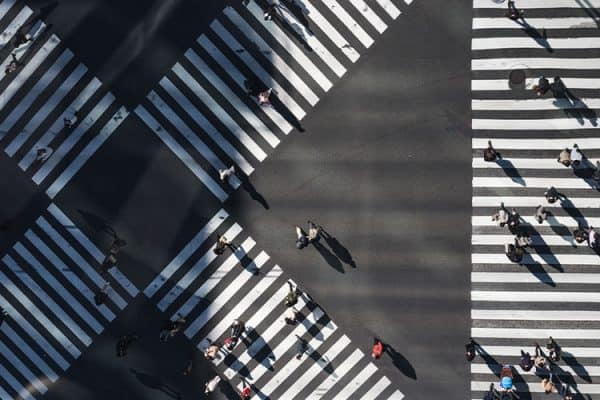 Good street photography involves being skilled with a camera’s settings and quick to capture images as they develop. It also involves creatively selecting angles to shoot buildings and people from. Consider these different angles to work a street photography scene:
Good street photography involves being skilled with a camera’s settings and quick to capture images as they develop. It also involves creatively selecting angles to shoot buildings and people from. Consider these different angles to work a street photography scene: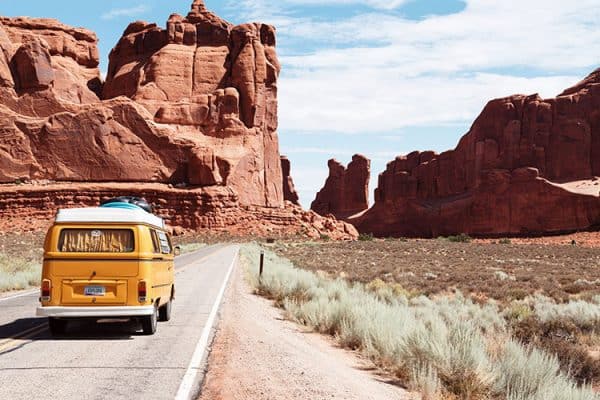
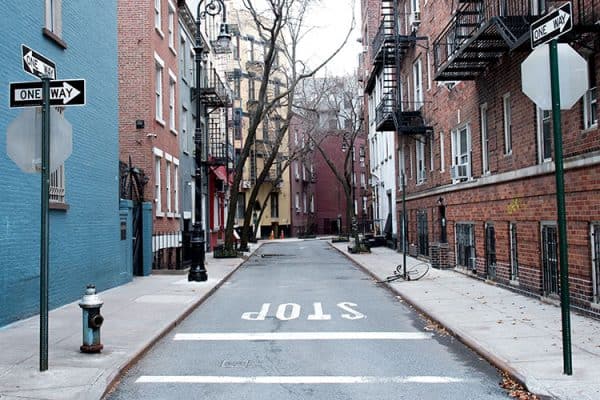 Good travel photography doesn’t just involve shooting landscape or architecture photos. Take a break from these standards and step into some
Good travel photography doesn’t just involve shooting landscape or architecture photos. Take a break from these standards and step into some 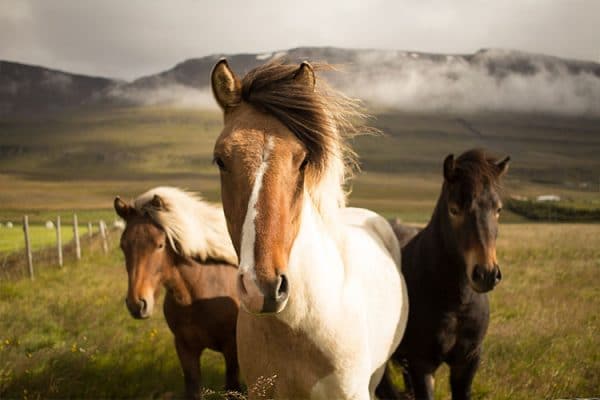
 Not all animal photos need to be taken at a comfortable 8-10 feet away from the subject. Some of the most creative images of pets are taken up close, with wide-angle lenses. Wildlife photography that captures animals at a distance—and in their natural habitat—is also an exciting addition to zoomed-in, full-frame images.
Not all animal photos need to be taken at a comfortable 8-10 feet away from the subject. Some of the most creative images of pets are taken up close, with wide-angle lenses. Wildlife photography that captures animals at a distance—and in their natural habitat—is also an exciting addition to zoomed-in, full-frame images. Once you start searching for creative ways to inspire your photography, you’ll be surprised how often you’ll find a new idea to try. Many experienced artists and photographers keep a small journal or inspiration book to jot down notes whenever you find inspiration. There are also smartphone apps that allow you to take photos of things that inspire you and save them for later.
Once you start searching for creative ways to inspire your photography, you’ll be surprised how often you’ll find a new idea to try. Many experienced artists and photographers keep a small journal or inspiration book to jot down notes whenever you find inspiration. There are also smartphone apps that allow you to take photos of things that inspire you and save them for later. Some of the world’s most successful photographers don’t just stop at taking photos. The creativity in their work comes from what they do with the images they take. Try a mixed media approach to your pictures and do something with your photos afterward. Techniques like sewing, burning, painting, and digital editing can all add dimension and more storytelling to your images.
Some of the world’s most successful photographers don’t just stop at taking photos. The creativity in their work comes from what they do with the images they take. Try a mixed media approach to your pictures and do something with your photos afterward. Techniques like sewing, burning, painting, and digital editing can all add dimension and more storytelling to your images.